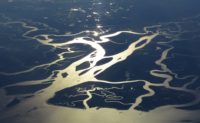Florida’s new governor, Ron DeSantis (R), swept into office issuing an executive order Jan. 10 for an ambitious program to improve the state’s water quality, quantity and supply; bring science, accountability and transparency to environmental programs; and enhance coastal protection. Over the next four years, DeSantis plans to invest $2.5 billion in Everglades restoration and protection of the state’s water resources.
“It’s only the Governor’s second day in office, and Audubon is encouraged by this move to address Florida’s water crises,” said Sean Cooley, Audubon spokesman, in a statement following the order.
The governor ordered “key Everglades projects” expedited, including the C-44 reservoir and stormwater treatment area (STA), C-43 Reservoir, Tamiami Trail and other projects necessary to protect waterways and natural resources. He ordered the addition of an STA to the C-43 Reservoir and instructed the South Florida Water Management District “to immediately start the next phase of the Everglades Agricultural Area Storage Reservoir Project design” and to ensure federal approval of the project.
The order calls for expediting projects with the U.S. Army Corps of Engineers to improve management of Lake Okeechobee, including updating the Corps’ regulation schedule to control discharges from the lake to Florida’s coasts. The discharges of lake water polluted with nutrients from agricultural runoff have produced toxic blooms of blue-green algae in the St. Lucie and Caloosahatchee estuaries. Last summer the blooms merged with naturally occurring red tide, coating miles of coastlines, killing sea creatures and damaging fisheries.
The algal blooms became a major issue in the gubernatorial campaign, prompting DeSantis to order reforms in the Dept. of Environmental Protection, including the creation of an office to organize and direct integrated scientific research and analysis, appointment of a chief science officer and establishment of a Blue-Green Algae Task Force for initiatives to reduce nutrients in key water bodies, including Lake Okeechobee.



Post a comment to this article
Report Abusive Comment